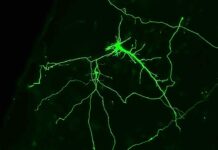The enigmatic human brain is undoubtedly one of the most complex and mysterious structures in the known universe. For centuries, scientists and philosophers have attempted to unravel its secrets, investigating how it functions, how it gives rise to consciousness, and how it shapes our thoughts, emotions, and behaviors.
Thanks to advancements in neuroscience research, we are finally beginning to unlock some of the secrets of the human brain. From mapping the structure and function of individual neurons to decoding the neural basis of complex behaviors, neuroscience has made remarkable progress in recent years, generating a wealth of perplexing and bursting information.
Brain Imaging: Gaining Insight into the Brain in Action
One of the most exhilarating and mind-boggling developments in neuroscience research has been the advent of brain imaging techniques that allow us to visualize the brain in action. These techniques provide a tantalizing window into the inner workings of the brain, enabling researchers to see how different regions of the brain are activated during various tasks and behaviors.
Several of the most widely used brain imaging techniques include:
-
Magnetic Resonance Imaging (MRI):
MRI is a non-invasive imaging technique that employs strong magnetic fields and radio waves to generate detailed images of the brain. It can be used to study the structure of the brain and the activity of different regions of the brain during various tasks.
-
Functional Magnetic Resonance Imaging (fMRI):
fMRI is a variation of MRI that allows researchers to study the functional activity of the brain. By measuring changes in blood flow in the brain, fMRI can detect which regions of the brain are active during different tasks and behaviors.
-
Positron Emission Tomography (PET):
PET is an imaging technique that utilizes a radioactive tracer to visualize metabolic activity in the brain. PET can be used to study the activity of different neurotransmitters, such as dopamine and serotonin, and to track the progression of neurodegenerative diseases such as Alzheimer’s disease.
-
Electroencephalography (EEG):
EEG is a non-invasive technique that measures the electrical activity of the brain through electrodes placed on the scalp. EEG can be used to study brain activity in real-time, and it is often used to study brain activity during sleep and in patients with epilepsy.
Brain Circuits: Mapping the Neural Networks of the Brain
In addition to imaging techniques, neuroscientists are also making significant strides in mapping the neural circuits that underlie different behaviors and mental processes. This involves identifying the specific populations of neurons that are involved in different tasks, as well as understanding how these neurons communicate with one another.
Some of the recent breakthroughs in brain circuit research include:
-
Connectomics:
Connectomics is the study of the neural connections in the brain. It involves mapping the complex network of synapses and axons that connect individual neurons, and understanding how this network gives rise to different behaviors and mental processes.
-
Optogenetics:
Optogenetics is a technique that allows researchers to selectively activate or deactivate specific populations of neurons using light. This technique has been used to study the neural circuits involved in addiction, memory, and other complex behaviors.
Brain Stimulation:
Brain stimulation is a technique that involves applying electrical or magnetic fields to specific regions of the brain. This technique can be used to activate or inhibit specific neural circuits and has shown promise as a treatment for neurological and psychiatric disorders.
Neurological and Psychiatric Disorders: New Treatments and Therapies
One of the most important applications of neuroscience research is the development of new treatments and therapies for neurological and psychiatric disorders. By understanding the underlying neural circuits and mechanisms of these disorders, researchers are developing novel treatments that target the root causes of these conditions.
Some of the recent breakthroughs in neurological and psychiatric treatments include:
-
Deep Brain Stimulation (DBS):
DBS is a surgical treatment that involves implanting electrodes in specific regions of the brain. These electrodes deliver electrical impulses that can modulate the activity of the brain circuits involved in conditions such as Parkinson’s disease, depression, and obsessive-compulsive disorder.
-
Transcranial Magnetic Stimulation (TMS):
TMS is a non-invasive brain stimulation technique that uses magnetic fields to stimulate specific regions of the brain. TMS has shown promise as a treatment for depression, anxiety, and other psychiatric disorders.
-
Gene Therapy:
Gene therapy involves modifying the genetic material of cells in order to treat or prevent disease. In the field of neuroscience, gene therapy is being developed as a potential treatment for neurological conditions such as Huntington’s disease and spinal muscular atrophy.
-
Virtual Reality Therapy:
Virtual reality therapy uses immersive environments to simulate different situations and experiences. This technique is being developed as a treatment for a variety of mental health conditions, including post-traumatic stress disorder, anxiety, and phobias.
-
Cognitive Behavioral Therapy (CBT):
CBT is a form of talk therapy that focuses on changing negative thought patterns and behaviors. CBT has been shown to be effective in treating a variety of mental health conditions, including depression, anxiety, and eating disorders.
Looking to the Future of Neuroscience Research
As neuroscience research continues to advance, we are likely to see even more breakthroughs in our understanding of the human brain and its functions. Some of the areas that are likely to receive significant attention in the coming years include:
-
Artificial Intelligence (AI):
AI is already being used to analyze large amounts of data in neuroscience research, and it is likely to play an even greater role in the future. AI may be used to identify new patterns and relationships in brain activity, leading to new insights into the neural basis of behavior and cognition.
-
Brain-Computer Interfaces (BCIs):
BCIs are devices that allow direct communication between the brain and a computer. These devices have the potential to revolutionize the way we interact with technology, and they may also have applications in the treatment of neurological and psychiatric disorders.
-
Neuroprosthetics:
Neuroprosthetics are devices that interface directly with the nervous system, allowing individuals with disabilities
Google News | Telegram
















